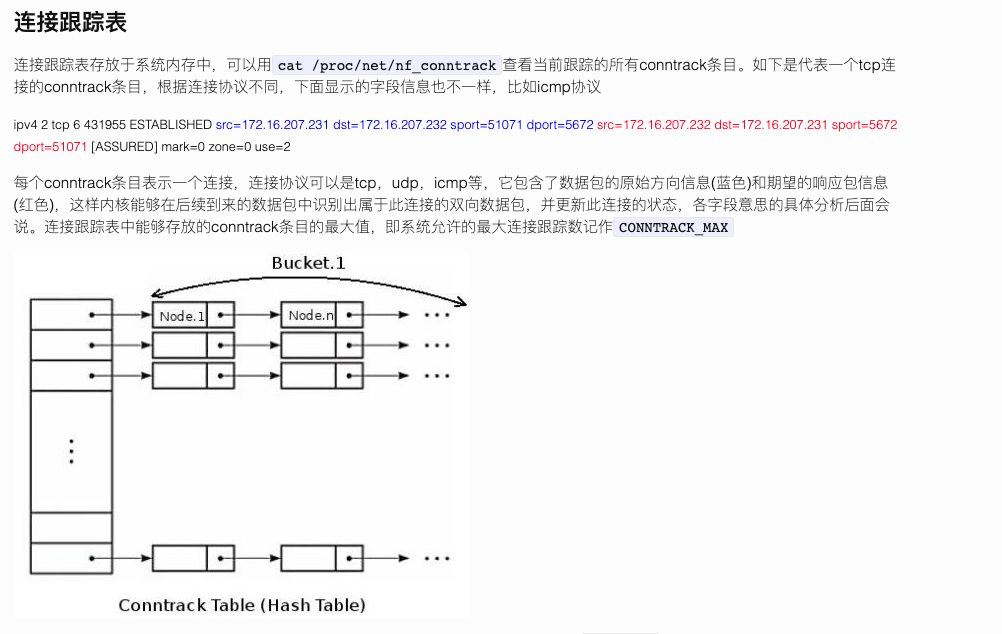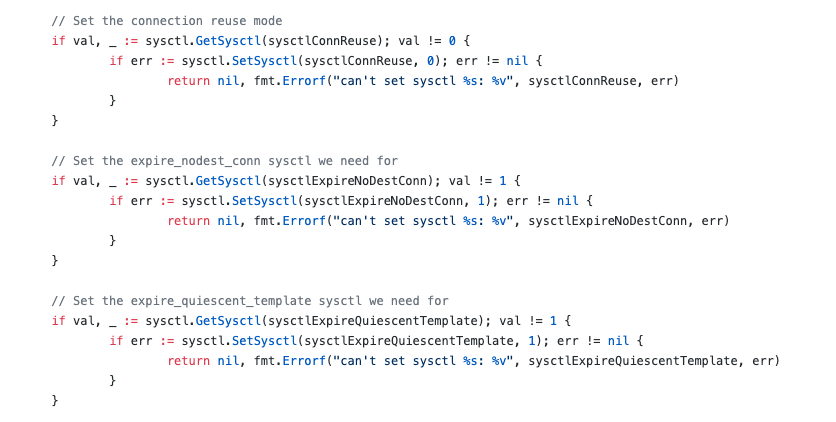K8S – IPVS下线POD导致调用方超时问题
最近上K8S,遇到了发布引发调用方超时的困扰,经过一周多的折腾,问题得到了定位,对kube-proxy这一套工作逻辑也有了更具体的认识。
下面记录一下。
背景
发布应用时候,调用方出现较多的超时调用。
分析摘要
明确是IPVS引起。
发布应用的时候,IPVS降权下线POD的weight=0,但仍旧将新建连接的流量引入到下线POD。
结合K8S ISSUE和UCLOUD给的线索,明确因为公司的短连接调用方式可以在短时间内复用端口,导致触发IPVS的conntrack表转发表记录的决策复用,导致新连接流量被送入最近一次的后端POD。
最初尝试conn_reuse_mode=1禁止新链接复用已有conntrack转发关系,但是遇到频繁的调用超时报错,经猜测怀疑是因为conntrack表性能问题:

因为conntrack hash分桶取模的依据是源IP+源PORT,而我们关闭了对已有记录的复用选项,所以短链接调用场景下会导致单个桶内大量同来源的记录,链表导致conntrack hash表性能蜕化。
目前可以明确conn_reuse_mode以及相关联的几个参数均是kube-proxy在ipvs模式下代码启动阶段直接设置到sysctl的,默认是conn_reuse_mode=0,也就是复用转发关系,因此只有在下线POD时才会遇到流量损失,而平时就不会。(详细见代码:https://github.com/kubernetes/kubernetes/blob/release-1.15/pkg/proxy/ipvs/proxier.go):

官方ISSUE:https://github.com/kubernetes/kubernetes/issues/81775,仍在活跃状态,需持续关注进展。
已知的解决选项(倾向iptables方案)
1)保持IPVS:每次发布都会超时报错,等待社区的解决方案。
2)切到iptables:根据各方反馈可以解决问题,但是需要控制集群规模(具体看下面ucloud测试结论)。(PS:切换过程理论只需要新建iptables node,下线ipvs node)
3)采用ingress:仍需面对dns延迟,endpoint摘除延迟等问题,也改变了现有的K8S技术架构。
参考链接
自从我们反馈问题到ucloud之后,ucloud和tencent都快速的给出了分析:
https://tencentcloudcontainerteam.github.io/2019/12/15/no-route-to-host/
https://docs.ucloud.cn/compute/uk8s/introduction/kubeproxy_mode
详细了解conntrack:
https://opengers.github.io/openstack/openstack-base-netfilter-framework-overview/
详细学习iptables:
在我的博客搜索《2小时学会iptables》。
相关概念
https://opengers.github.io/openstack/openstack-base-netfilter-framework-overview/
conn_reuse_mode – INTEGER
1 – defaultControls how ipvs will deal with connections that are detected
port reuse. It is a bitmap, with the values being:0: disable any special handling on port reuse. The new
connection will be delivered to the same real server that was
servicing the previous connection. This will effectively
disable expire_nodest_conn.bit 1: enable rescheduling of new connections when it is safe.
That is, whenever expire_nodest_conn and for TCP sockets, when
the connection is in TIME_WAIT state (which is only possible if
you use NAT mode).bit 2: it is bit 1 plus, for TCP connections, when connections
are in FIN_WAIT state, as this is the last state seen by load
balancer in Direct Routing mode. This bit helps on adding new
real servers to a very busy cluster.
如果文章帮助您解决了工作难题,您可以帮我点击屏幕上的任意广告,或者赞助少量费用来支持我的持续创作,谢谢~

图片看不了啊
处理了
1
1
conn_reuse_mode=1更改以后出现缓慢问题不是性能问题。麻烦作者跟进一下issue的内容,缓慢的原因是ipvs的原有逻辑是对于SYN的包(并且已有对应conntrack记录),会直接DROP网络包,等待SYN重发,才会expire旧的记录,重发的间隔1s,大量新的连接都会出现1s的情况,所以看起来像是性能问题。
在其他博客中有纠正,该博客结论比较早期。
1
1
1
1
1
1